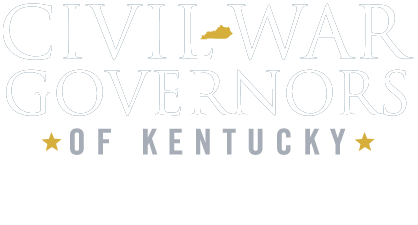Introduction
War can be a socially disruptive force, at once a terror to traditionally vulnerable members of a society, yet at the same time presenting the opportunity for these traditionally voiceless people to be heard and even to exercise a level of agency that would be difficult or impossible in times of peace. Political economy refers to the interconnection between economics, policy, and culture. In other words, how economics plays out in the real world. In this case, we will be examining women and economics in the Civil War era through primary documents in order to understand how politics, gender, race, and class functioned in 19th century war-time America within a capitalist economic system.
Learning Objectives:
- Learn how to search for and interpret digital primary documents.
- Understand the difference between primary and secondary sources.
- Demonstrate an understanding of important legal and social concepts such as coverture, patriarchy, and gender.
Below is a sampling of some of the documents in the CWGK collection that concern women in various economic capacities and situations. Assign one, a collection, or all for your students to read (or have them peruse on their own). Have them consider the questions and definitions that follow for discussion. Where available, be sure to instruct them to investigate the individual biographies provided by CWGK within the document. Primary sources:
- KYR-0001-004-0338: J. W. Ritter et al. to Thomas E. Bramlette
- KYR-0001-003-0116: William DeB. Morrill to Unknown
- KYR-0001-020-1808: George B. Baum to Beriah Magoffin
- KYR-0001-020-1288: Philip Carroll to Beriah Magoffin
- KYR-0001-004-2252: D. L. Sanders to Thomas E. Bramlette
- KYR-0001-020-1684: Thomas McGibon et al. to Beriah Magoffin
- KYR-0001-004-0400: J. W. Knight et al. to Thomas E. Bramlette
- KYR-0001-029-0219: W. E. Arthur to James F. Robinson
- KYR-0001-020-1754: Adam Glue et al. to Beriah Magoffin
- KYR-0001-020-0665: Polley Ratliff to Beriah Magoffin
- KYR-0001-029-0425: John Clay to James P. Metcalf
- KYR-0001-004-0259: Leander M. Cox et al. to Thomas E. Bramlette
- KYR-0001-004-0528: Mary W. Smith and J. R. Newton to Thomas E. Bramlette
- KYR-0001-004-1722: C. A. Wandelohr et al. to Thomas E. Bramlette
- KYR-0001-004-0134: Caroline Dement to Thomas E. Bramlette
- KYR-0001-020-1088: Jane Welch to Beriah Magoffin
- KYR-0001-020-0500: Elizabeth Palmer to Beriah Magoffin
- KYR-0002-222-0021: James F. Robinson, Jr., Receipt to Hannah Hays
Questions for students to consider:
- What economic obstacles did women face in Kentucky during the Civil War? To what extent did the war lead to these problems? How were these obstacles complicated by the issue of gender?
- What recourse did women have in times of economic hardship?
- In what ways did the war enhance the economic agency of women? In what ways did it reinforce the patriarchal order? Can you point to examples where women were able to use stereotypically gendered female traits (i.e. women as repositories of moral virtue) to wield influence and power in a world that normally left them politically powerless to remedy their economic situation? Can you point to examples where the violation of those norms was used to portray women as undeserving?
- How did race factor into a woman’s ability to earn a livelihood? What unique challenges did African Americans face?
Important terms for discussion:
- Coverture: a common-law system in the United States where upon marriage a woman’s legal identity was merged with her husband’s. As head of household, the husband inherited all of his wife’s money and property and controlled all finances. With some caveats this system applied to marriage in Kentucky in the 1860s, severely limiting the wife’s independence.
- Patriarchy: a society or government in which men hold the power and women are largely excluded from it.
- Gender: the socially constructed and mutable characteristics a society attributes to women and men that can vary depending on culture and time.
Learning Activity:
Break students into small groups, and give each group a specific identity and economic situation to work with. These can be drawn from actual biographies and petitions in CWGK.
- Have students consider the person’s race, gender, and class. For example, is this person a wealthy white woman with Confederate sympathies? A freedwoman living in a “contraband” camp? Or a poor white woman in Eastern Kentucky?
- Each group will also be given a set of economic hardships faced by their person. Have them write a petition to the governor explaining their circumstances and seeking relief.
- Have students consider what their person might realistically hope to be able to accomplish. To what degree could they expect their situation to be redressed?
Secondary Sources:
Books
Melissa A. McEuen and Thomas H. Appleton, Jr., eds. Kentucky Women: Their Lives and Times (Athens: University of Georgia Press, 2015).
Faust, Drew Gilpin. Mothers of Invention: Woman of the Slaveholding South in the American Civil War (UNC Press, 1996).
Giesberg, Judith. Army at Home: Women and the Civil War on the Northern Home Front (UNC Press, 2009).
Glymph, Tavolia. The Women’s Fight: The Civil War’s Battle for Home, Freedom, and Nation (UNC Press, 2019).
McCurry, Stephanie. Women’s War: Fighting and Surviving the American Civil War (Harvard University Press, 2019).
Articles
Anne Sarah Rubin, “’Literally Destroyed as a Housekeeper’: Hunger and Hardship in Civil War Kentucky,” Register of the Kentucky Historical Society 117, 3 (2019): 215-228.
Crystal Feimster, “Keeping a Disorderly House in Civil War Kentucky,” Register of the Kentucky Historical Society 117, 3 (2019): 301-322.
W. Lewis Roberts, “Property Rights of Married Women in Kentucky,” Kentucky Law Journal 11, 1 (1922): 1-9.

